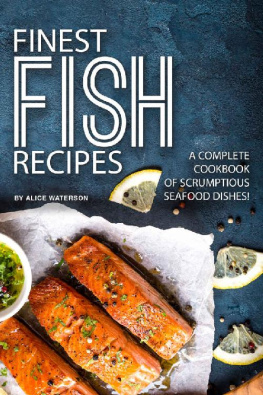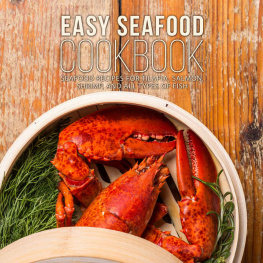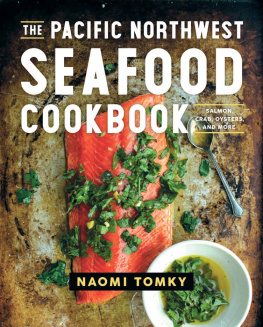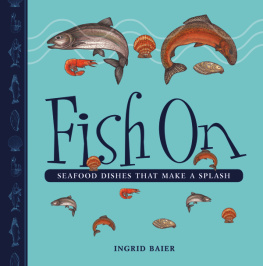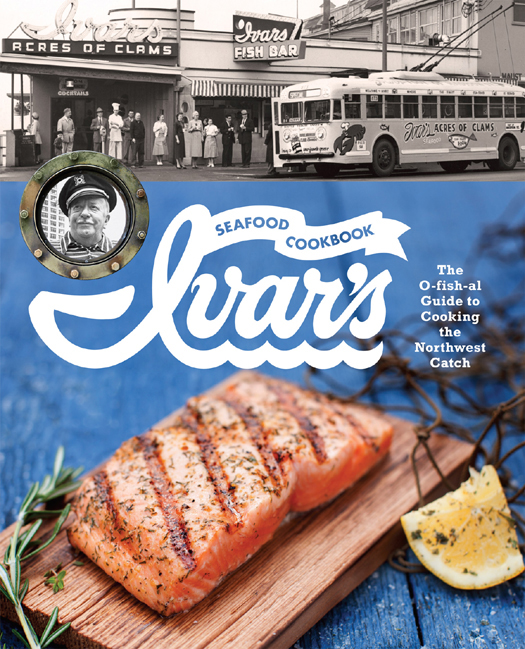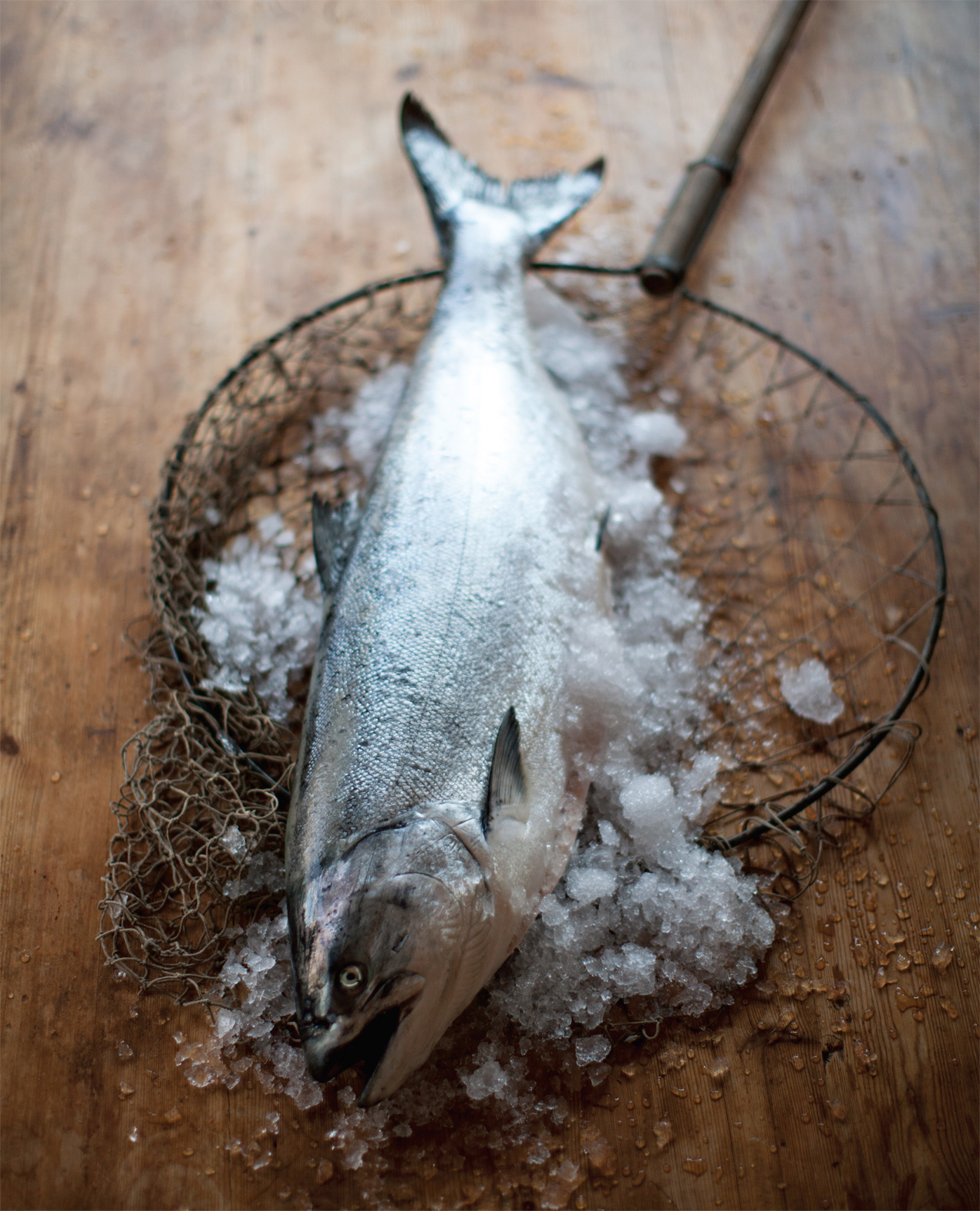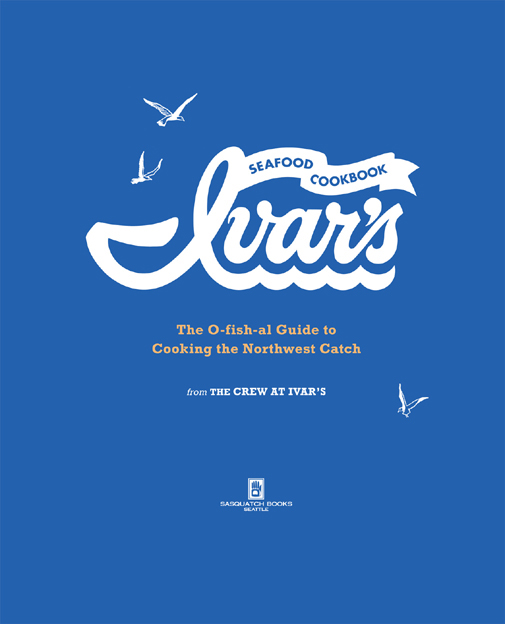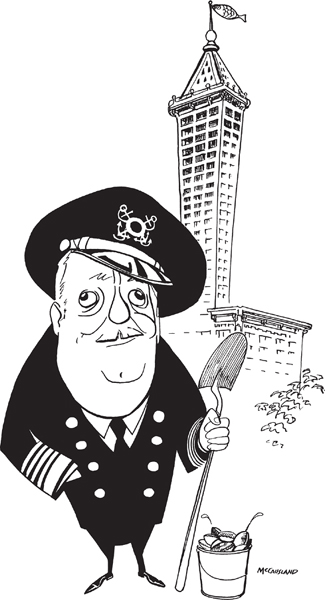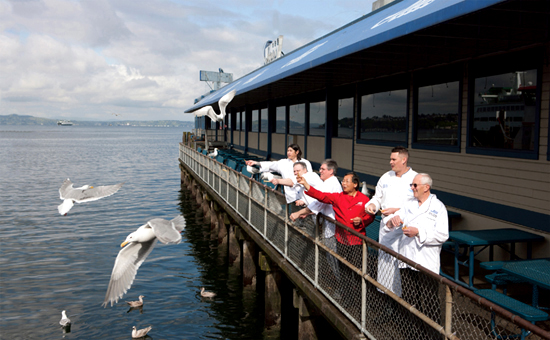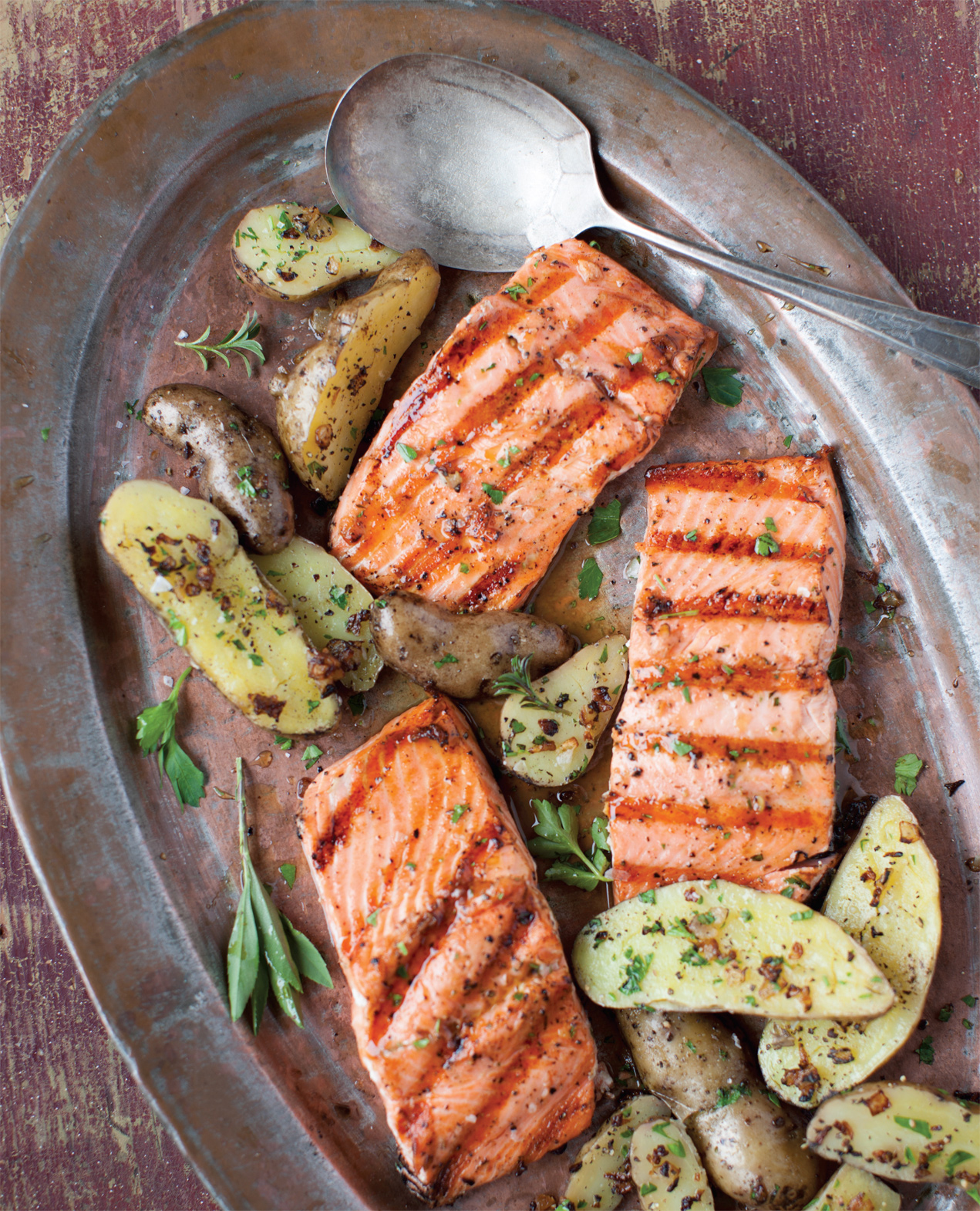Ivars chefs, testing new appetizers, from left to right: Juan Garcia, Steve Anderson, Craig Breedon, Phil Lam, Chris Garr, Einar Larson, May 2013. Still sailing: Ray Espinoza .
Can you find the mistake in this photo? 1951, Pier 54. Write to us for the answer .
INTRODUCTION
If Seattle was part of your childhood, you shorely remember your first visit to Ivars. You probably bellied up to the fish bar on Pier 54 after a trip to the aquarium, munching on fish-and-chips as folks did when Ivars opened 75 years ago. You insisted on sitting outside in the drizzle so you could tease the seagulls, ignoring your parents pleas to stay dry as your jeans soaked up water from the benches. Maybe you remember gazing at the Space Needle across Lake Union from Ivars Salmon House, buttered cornbread warming your hand. By the time you visited Mukilteo Landing, a quick stop before the ferry to Whidbey Island, you were old enough to remember the fish: you ordered hot, crispy battered cod because you knew eating fish-and-chips wouldnt interfere with your ability to fight with your brother while wearing the kids menu as a divers mask. (Dont worry, it was designed for just that porpoise.)
Seattleites have early Ivars memories because their parents ate there and still love to eat there too. On average, our customers visit our seafood bars about once every 10 days, so we take customer service seriously (at least, more seriously than we take most things). Those memories are what keep us swimming, working hard each day to provide you with the best fish and shellfish we can find and to serve it up in an environment that brings you back for more. After 75 years, we want Ivars to remain a family experience, and we want it to be fun.
We also want it to be delicious. So far, were skating by. Ivars receives boatloads of recipe requests, and every week we respond, just as Ivar used to do. To celebrate our 75th anniversary, weve reeled in a collection of recipes both old and new, a net full of chefs favorites and old reliables that keep our restaurants and seafood bars afloat. Weve tested them in professional kitchens and home kitchens and in some motor home kitchens, so no matter what boat youre in, our recipes work.
Ivar Haglund, our flounder, had an exuberant comic spiritone we try to keep alive with us in everything we do (hence our slogan, Keep Clam). Peppered among the recipes, youll find the fish tales that have gotten people steamed up over the years, like the story about Ivars underwater billboards and the government drama behind Ivars notorious clam stamp. We hope youll enjoy this book as a guide to re-creating our piscatorial pleasures in your own kitchen, and also as a leisurely, entertaining swim through Ivars history. Because for the crew at Ivars todaylike for Ivar Haglundnothing beats a finny story.
HOW WE LEARNED TO SWIM
Ivar Haglund, our flounder, liked to say that Ivars started because of one thing: hunger. But it really started with a guitar and an aquarium.
Born in West Seattle in 1905, Ivar Haglund was raised by a single father who praised little (he was a bit of a snapper), but always recognized Ivars sense of humor. From an early age, Ivar was an entertainer, crooning for anyone who wanted to listen. In college, he made money singing, dancing, and playing the ukulele or guitar, often all at once. After graduating from the University of Washington in 1928 with a degree in economicsan ironic degree to earn a year before the stock market crash of 1929, but Ivar was always ahead of the timesIvar lived off money from his late fathers rental properties and enjoyed a bohemian lifestyle, writing folk songs and playing guitar. He developed a decent reputation as a Western folk singer, keeping company with the likes of Pete Seeger, Burl Ives, and Woody Guthrie.
Inspired by several visits to Seaside, Oregon, where his cousins operated a profitable aquarium, Ivar opened a small aquarium on Harbor Avenue in West Seattle in 1937, with specimens he gathered off Alki Point under a special permit from the city.
Finding limited success, the next year Ivar moved his little dime aquarium to Pier 54, which in those days was Pier 3. (The Navy renumbered Seattles piers during World War II because its ships couldnt seem to keep up with Seattles odd numbering system.) He used his musical prowess to promote his business by singing ballads and chanteys on daily radio shows. Then, as now, the pier was a waterfront attraction in the summer, but early winter has never been a fabulous time to be out meandering in Seattle weather, and Ivar didnt have a huge advertising budget when business slowed down. So in December 1940, he pulled the first of what would be many big publicity stunts: a few days before Christmas, he put Patsy, the aquariums new baby seal, into a baby buggy, and took her (him, actually) to see Santa Claus at Frederick & Nelson, then one of the largest Seattle department stores. By the time Ivar had traveled with Patsy from the pier to the line for Santa, word had spread. They were greeted by one surprised Santa Claus and groupers of journalists and reportersproof for Ivar (and for Frederick & Nelson) that traditional media werent always the most beneficial for a company. From then on, when it came to garnering press for his various endeavors, Ivar depended on his own ingenuity.


